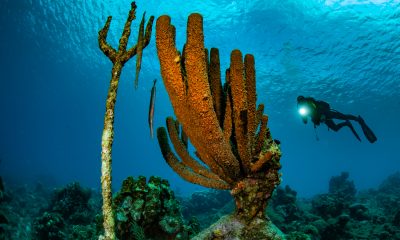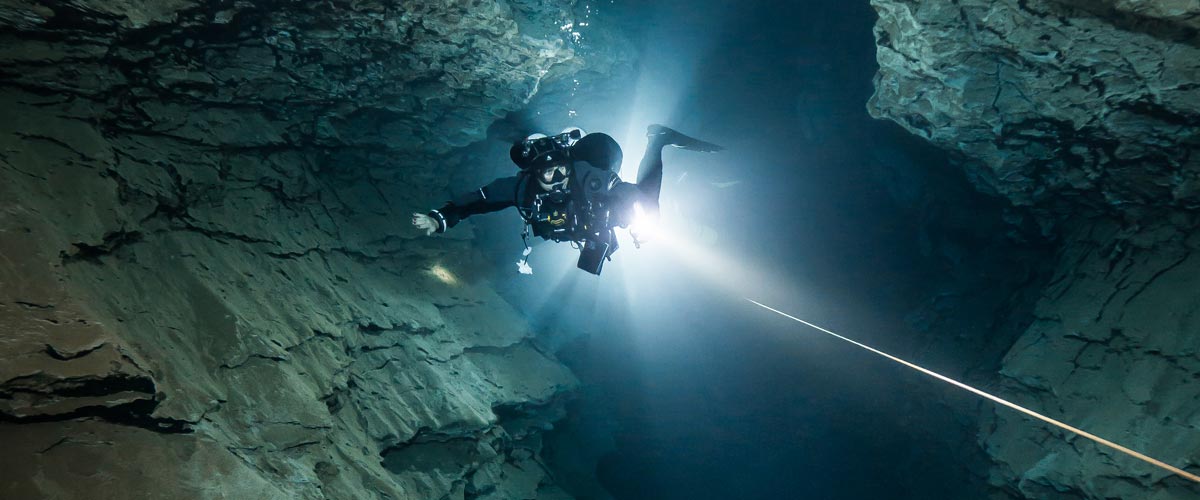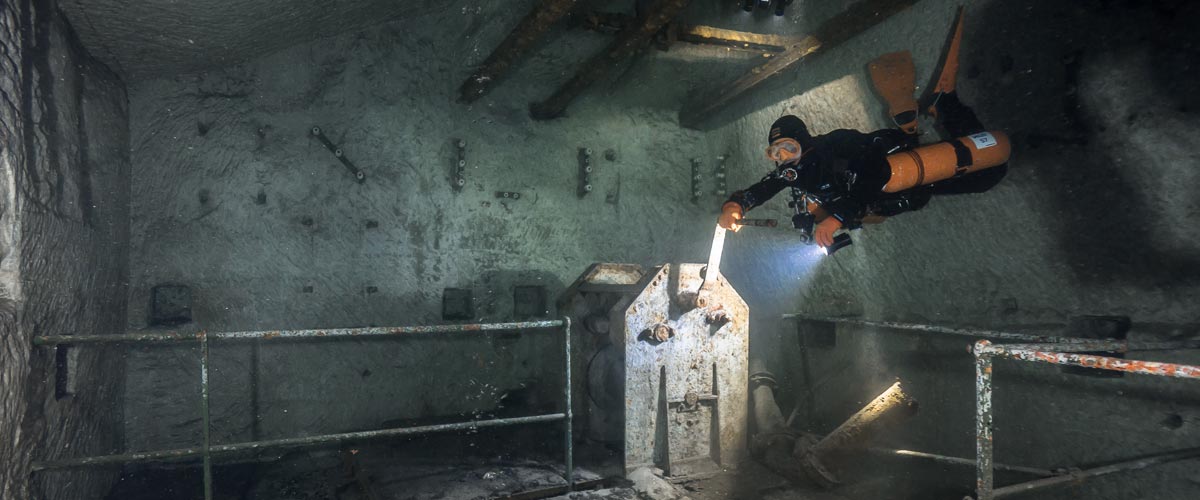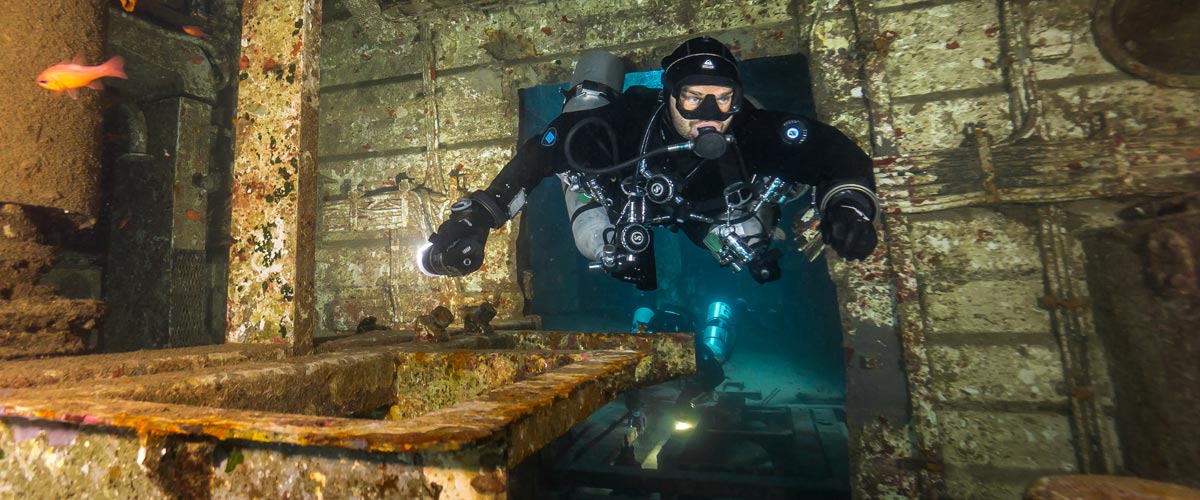Dive Training Blogs
Surf Rescue: What we learned from this Dive
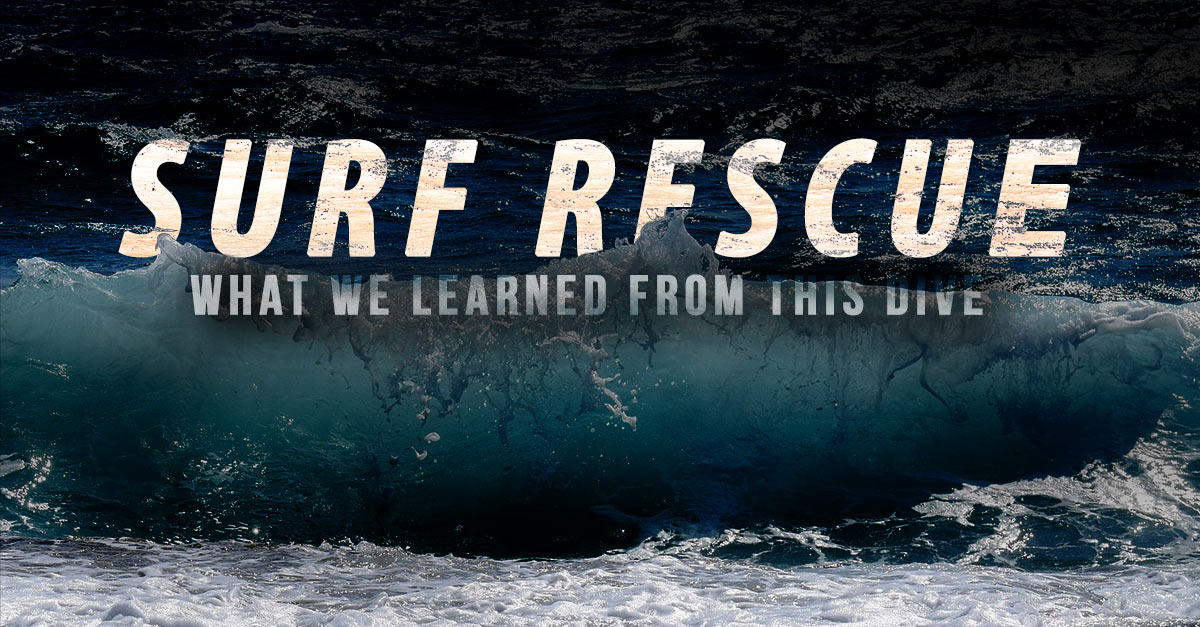
By: James Webber
So far, it’s a slow Sunday…
The sun is blasting away, the palm trees are swaying in the wind and I can smell the charcoal from the grills up on the beach, those burgers smell damn good. It’s spring break here in South Florida and the beaches in my zone are packed full of, as Jimmy Buffet sings “tourists covered in oil.” There’s just one little thing that really nags me about today, it’s the strong East wind of around 20 knots. Yeah, I know what you’re thinking…20 knots, that’s not all that much it’s perfect for kite surfing and boogie boarding. You’re 100% right in that thought…however, it’s also perfect for one more thing and that thing is rip currents. The red and yellow flags are up for a reason today hopefully groups of Ray Charles’ are not out swimming today. Apparently, he also forecasts for NOAA too. Who would have thought right?
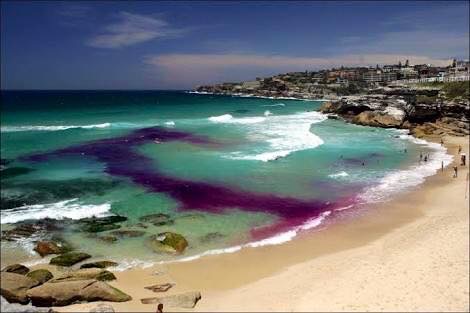
Rip currents occur when water is bunched up onto the beach and has only a few little channels to exit that beach. At those points, rip currents are formed. Rip currents look deceptively calm when viewed against the crashing waves just feet away. To an ill-informed swimmer, they look like the perfect place to swim…and that’s the venus fly trap of the beach.
We Get the Call
The tones blast into the station, Ladder 99 respond to a call of a multiple drowning…now that’s a call that really gets the old sphincter to tighten like nobody’s business. I immediately call for additional resources because I know from sad past experiences that the usual number is FOUR. Four? How do you get four people drowning at once? Well, it’s pretty simple. It’s the initial victim, a first rescuer, a second rescuer and usually a police officer as well. The first and second rescuers are definitely good Samaritans, the police officer may have had training, however he usually lacks the equipment and backup to go into the water safely. They also usually don’t have the natural flotation that a fireman usually has, if you catch my drift.
I know from the location that we’re being dispatched to, that I’ll be on scene first with backup a good 10-12 minutes away. That’s a VERY LONG time when the ability to breathe is denied. Luckily, I’ve got a rescue with me and five people that I can use.
I’ve got rescue boards, Sterns vests and rescue tubes
What I don’t have is a team of Michael Phelps like swimmers, I’ve got FNGs. My resources are severely stretched to the limit due to the shear amount of victims. I may have to decide who lives and who dies today, that’s not a fun feeling. I’ve also got my crew who I swore I would make damn well sure that they go home safe every morning. Today may be the day that promise is broken. I establish “Beach Command” as we sight the victims and update their location to my other responding units; the victims are FAR out in the ocean. I bark orders to my crew to get all the gear they need and to bring down the stretcher as well, I also know from experience that somebody, if not most of the victims will be going the hospital…that’s if I’m lucky.
My crew dons their gear and uses the rip current to quickly get to the victims, it’s something I’ve beat into their heads since I took them under my wing. Three of the victims are given flotation aids, but one victim is missing. We start a quick search from their LKP (last known position) and luckily grab them pretty quick. Swimming parallel to the beach to get out of the rip, my crew drags them in one by one. I hear the other units go arrival at my location and I instruct the other officers to prepare for the cardiac arrest that we’re bringing in. I also know from experience, that’s not a good ending for that person. It’s rare we’ll get ROSC (return of spontaneous circulation) back with a call like this and even if we do, the lungs can be filled with seawater and sand (think of your wetsuit if you leave it in the car for a day after use without cleaning it. Now imagine that in your lungs. The real sad part, the initial victim is rescued; it’s the second lay person rescuer who is the one who’s being worked on. The crowd gathers to watch the dog and pony show, I know this a futile attempt. My priority is my crew; I slip out of the crowd and make sure each one is OK. Thankfully, I won’t be breaking my promise today, at least not yet, it’s only 1300 and we’ve got until 800 tomorrow and there are a LOT of “tourists covered in oil”.
Sometimes it’s best to do nothing
SO….what I’ve learned, sometimes it’s best to do nothing when you don’t have the knowledge, skills, abilities, and equipment to perform the rescue. They all had the best of intentions, however the decision they made that day may have sealed the fate of the deceased. Had we had a single victim, I would have been able to focus all my crew on that one person. Be careful around water, it doesn’t know, doesn’t care and the ocean will always bag its limit too. Don’t be the lobster.
To find out more about International Training, visit www.tdisdi.com.

Blogs
Intro to Tech: What is it about?
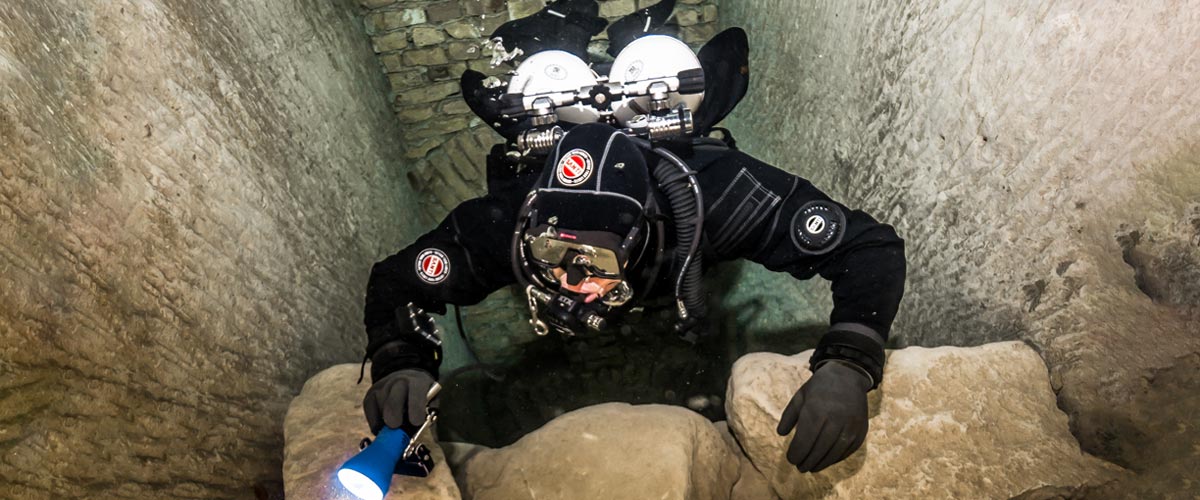
Article by José Pablo Mir
Pictures by Cezary Abramowski
The world of technical diving is exciting. It opens the door to new sites, depths, and bottom times. More importantly, it opens our minds to a new way of planning, facing, and experiencing dives, even those not purely technical.
Becoming a technical diver is a process, and like in other aspects of life, we should find the proper entry point that suits us best based on our knowledge and experience. The Introduction to Technical Diving course from TDI -the world’s largest and most recognized technical diving teaching organization- is the best option for divers who have yet to gain experience in the fundamental aspects of this new practice. The course’s content and its embrace of new techniques and technologies make it possible to acquire a solid foundation to learn and gain experience in this practice properly.
Becoming a technical diver is not something that happens overnight, whether deciding to become one or receiving a certification card stating we are now technical divers. It is a slow process extending farther away than any introductory course. It requires effort and dedication. But it will bring us satisfaction from day one -or two.
It is a matter of mentality
First, we must understand and accept that technical diving, involving greater depths, longer bottom times, exotic gases, virtual or real ceilings, and more, comes with higher levels of risk than the sport diving we have been practicing until now.
Although this discussion usually starts with a warning about risks, as I’ve done in the previous sentence, our practice is not a game of chance.
Technical diving is a rational activity that requires maturity and good judgment, and we will put everything into ensuring that each dive is a successful one -meaning we return from it safe and sound. With this understanding, we will strive to establish a mental attitude more aligned with our practice and its realities.
This new “technical diver” mindset we will develop will lead us to be more cautious in our executions, more analytical in our plans, more rational in our strategies, and more detailed in our procedures.
Experience will keep teaching us to know ourselves better, to keep our anxiety and other emotions under control, and to manage our impulses. Over time, our senses will sharpen, and we will be more attentive to the particulars of the situation we find ourselves in.
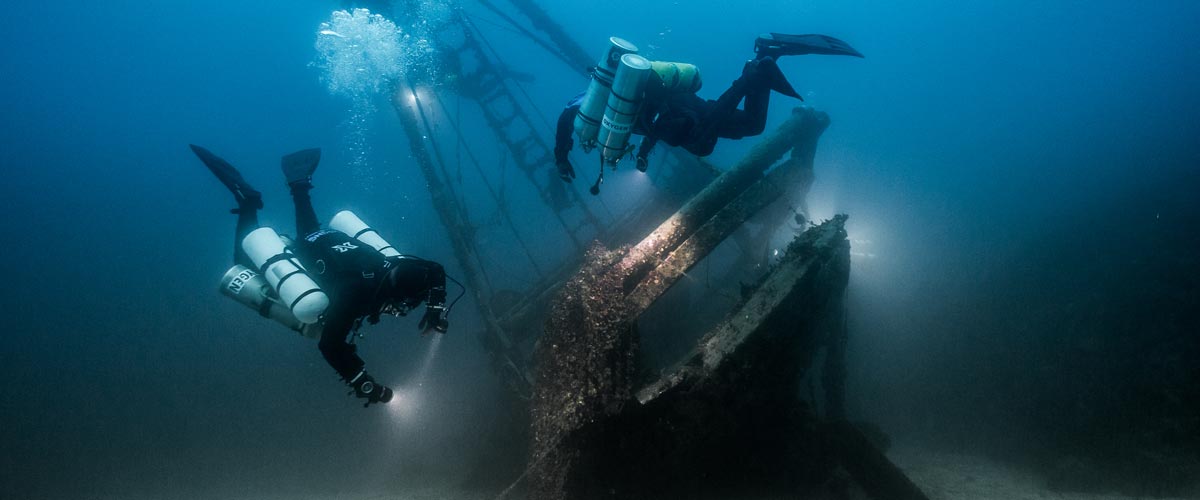
Strategies and procedures
Our strategies, those broad guiding lines tracing the path to follow, from how to approach planning to where, with what, and how we are willing to get there, will be more specific and more practical. Not because they magically become so, but because we will consciously and deliberately frame them that way.
We will establish clear, concise, and realistic procedures. Not only for the undesirable situations that may present themselves but also for those that are part of our dive objectives.
Even though, as technical divers, we often use equipment different from what we were previously accustomed to, it is essential to note that the gear does not make the diver. In a way, we could consider such equipment as the necessary tools to implement what our goal seeks to achieve, according to our strategies and procedures.
Technique plays an important role
We must put our greatest effort into learning and perfecting the different techniques we will be acquiring. Buoyancy, trim, propulsion, cylinder handling, deploying DSMBs and lift bags, valve drills, and more are essential skills we must begin to master to progress in our art. What we cannot do, when we need to do it, can harm us.
Our techniques must be effective and achieve the purpose for which they were devised. But they must also be efficient and require the least resources possible, including the time they take and the effort they demand. Effectiveness and efficiency will prevail over beauty and other considerations that may come to mind, although none of them should be mutually exclusive. A technique executed efficiently and effectively tends to have an inherent beauty.
Refining techniques is a lifelong mission. Some of them will be easy to master from the go; others, on the other hand, will be our life mission and will require many repetitions just to resemble the idea we have in mind of how they should be executed.
We must consider the environment
Our learning, the needs and musts of the practice we engage in, the experience we gradually gain, our strategies and procedures, and even our equipment and tools change with the environment.
Diving in the ocean, everything about us must be suitable for ocean dives. Conditions there rarely emulate those found in a pool, lake, or river. Variable winds and currents, greater depths, visibility conditions, other divers with uncertain skills around us, marine life, maritime traffic, distance from the coast, and many other factors add complexity and uncertainty.
It is never necessary to master the pool on the first day, but planning and aspiring to gradually cope with the ocean’s conditions is essential.
The cost of good training
We are aware that our resources are often scarce in relation to the possibilities of use we could give them if they were not. To a greater or lesser extent, we are part of the economic reality in which we are embedded.
Fortunately, the cost of good technical diver training is not an entry barrier. Comparing training and equipment costs, we see that the former are generally lower. Yes, lower cost for personalized service, essential to our future
performance and safety, than for a series of mass-produced products that are mere, albeit necessary, tools for an end.
The value of good training
The value of the training we received encompasses a range of characteristics, from emotional and methodological to technical and technological. TDI and its Introduction to Technical Diving course offer a deep and modern approach, with a teaching strategy that aims to create thinking divers, not merely obedient ones.
As technical divers, our knowledge is our primary tool. In this type of activity, what we don’t know can harm us.
Is this course optional?
Unfortunately, the fact that this Introduction to Technical Diving course is not a prerequisite for any subsequent training is an invitation to consider it optional. And we all know what usually happens to “optional” under budget constraints.
However, this course should be seen as optional only by those divers who are somehow familiar with the use of technical equipment, who have a mindset more in line with the requirements of this type of diving, who plan and execute the dives the proper “technical” way, who know their gas consumption rate, who are not intimidated by non-decompression tables, who feel comfortable using their dive computers, and know the techniques and have at least an acceptable level of buoyancy, positioning, and propulsion. Those can go straight to a more advanced training course, such as TDI’s Advanced Nitrox.
We must ask ourselves whether or not we are in that group.
Remember our goal: to have fun
Recreational diving is our passion. Jumping into the water carrying heavy equipment and having properly dotted our I’s and crossed our T’s have only one ultimate goal: fun. This is the activity we have chosen as a hobby. We must enjoy it; it must give us pleasure and make us vibrate.
Having a good time is not optional!
Blogs
Four opportunities to go pro in 2024 with Dive Friends Bonaire
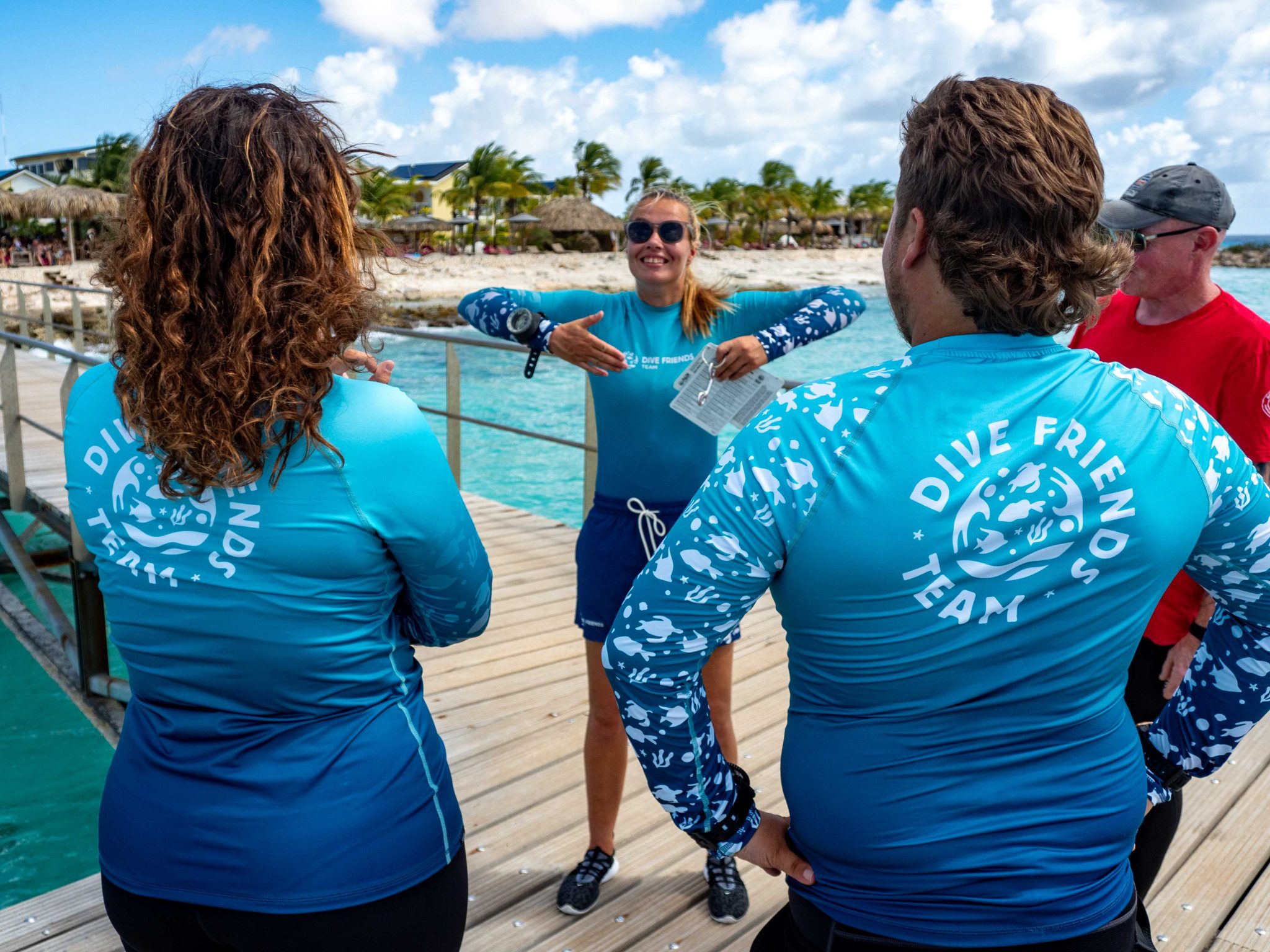
Dive Friends teaches the Instructor Development Course (IDC) several times a year to students who are eager to share their passion for diving with the world.
Dive Friends is known for the personal approach throughout the course. Their in-house course director will lead the students through every essential step, mentoring them to achieve their fullest potential as a dive instructor.
Applications for the following IDC start dates are now open:
- 12 April
- 5 July,
- 20 September
- 29 November
Partnership with Casita Palma
If the student opts for the IDC-Deluxe or IDC-Supreme package, their accommodation will be arranged for them at Casita Palma. This small and quiet resort is within walking distance from Dive Friends Bonaire’s main dive shop location and has everything you need to relax after an intense day of IDC training. Breakfast is included, so the student will always be fuelled and ready for their day.
Contact Dive Friends Bonaire’s Course Director Eddy for more information: coursedirector@divefriendsbonaire.com.
-

 News3 months ago
News3 months agoHone your underwater photography skills with Alphamarine Photography at Red Sea Diving Safari in March
-

 News2 months ago
News2 months agoCapturing Critters in Lembeh Underwater Photography Workshop 2024: Event Roundup
-

 Marine Life & Conservation Blogs2 months ago
Marine Life & Conservation Blogs2 months agoCreature Feature: Swell Sharks
-

 Blogs1 month ago
Blogs1 month agoMurex Resorts: Passport to Paradise!
-

 Gear News3 months ago
Gear News3 months agoBare X-Mission Drysuit: Ideal for Both Technical and Recreational Divers
-

 Blogs2 months ago
Blogs2 months agoDiver Discovering Whale Skeletons Beneath Ice Judged World’s Best Underwater Photograph
-

 Gear Reviews2 months ago
Gear Reviews2 months agoGear Review: Oceanic+ Dive Housing for iPhone
-

 Blogs3 months ago
Blogs3 months agoThe Thrilling Encounter with Tiger Sharks at Beqa Lagoon’s ‘The Colosseum’ with Coral Coast Divers











